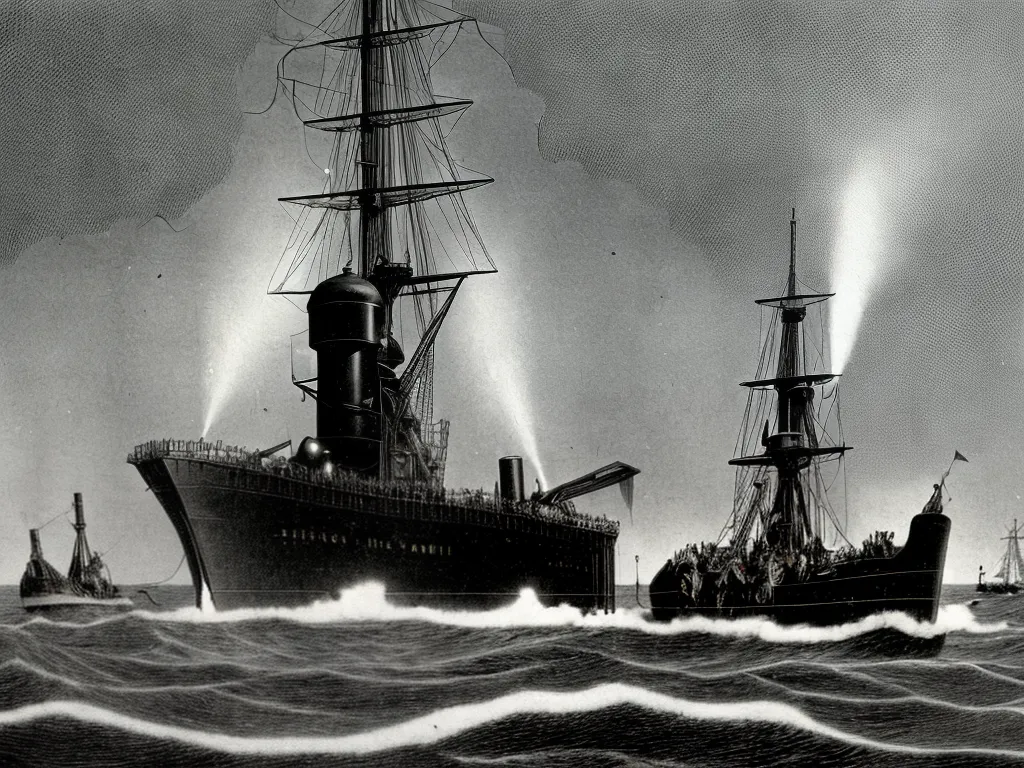
Introduction
The 19th century was a time of innovation and discovery. As the Industrial Revolution took hold, new technologies emerged that would forever change the world. One of those key technologies was electric lighting. But where did the fuel for those first electric lights come from? Surprisingly, it was whale oil.
In this article, I will explore the fascinating history of how whale oil enabled the dawn of the electric light era. We'll look at:
- The importance of whale oil before electricity
- How whale oil was used to power early electric lights
- The boom and decline of the whaling industry
- The switch to new kinds of fuels like kerosene
- How the electric lighting revolution transformed the world
Let's dive in and shed some light on this captivating story!
The Critical Importance of Whale Oil in the 1800s
Whale oil was a crucial resource in the 1800s. It provided lighting via whale oil lamps and was used to manufacture soap, textiles, and more. The whaling industry experienced massive growth to keep up with demand.
Some key facts about whale oil at the time:
- Primary source of illumination in homes, businesses, lighthouses
- Also used in lubrication, textile manufacturing, soap making
- U.S. whaling industry employment peaked at over 70,000 in 1850
- Up to 15 gallon of high quality oil yielded from a single whale
With reliable electricity still a distant dream, whale oil literally fueled the economy in the early to mid 1800s. Its importance simply cannot be overstated.
Now let's explore how this crucial substance powered the first steps toward electric lights.
Harnessing Whale Oil to Generate Electricity
In the first half of the 1800s, inventors began tinkering with primitive electric lights. However, they all faced the same challenge - finding a suitable source of electricity.
Enter whale oil. Leading innovators of the time discovered that whale oil could be used to generate electricity to power their early bulb and arc lamp designs.
Some of the key pioneers who leveraged whale oil for electric lighting include:
- Humphry Davy (1809) - Created first arc lamp powered by whale oil battery
- Warren De La Rue (1840) - Used whale oil fuel cell to power vacuum tube light
- Frederick De Moleyns (1841) - Patented lamp using whale oil to generate electricity
The work of these innovators showcases how whale oil enabled the crucial first steps toward practical electric lighting. For a few short decades in the mid-1800s, they whale oil fueled the lighting of the future.
The Whaling Industry Booms Then Declines
The new application of whale oil in early electric lights accelerated demand. This fueled a massive boom in the whaling industry.
The peak occurred in the mid-1800s, with over 700 whaling ships operating out of American ports. New Bedford, Massachusetts was the epicenter, hosting over 300 ships at its height.
Yet in the late 1800s, the whaling industry experienced a swift collapse. Why did this occur?
- Whale population depletion - Unsustainable hunting practices
- New petroleum discoveries - Kerosene became a cheaper alternative
- Electricity - No longer needed whale oil for lighting
Within just 2-3 decades, whale populations declined precipitously and the industry faded. Fortunately, new lighting fuels emerged to meet demand.
The Rise of Kerosene and New Fuels
As whale oil became scarce and expensive, new alternatives emerged. The most impactful was kerosene distilled from petroleum.
Some key facts about the rise of kerosene:
- Kerosene could be produced cheaply in large quantities from petroleum
- It was adopted for lamps as a replacement for whale oil
- Also used as a fuel for many early gas engines
- Domestic kerosene production skyrocketed from 325,000 gallons in 1859 to over 40 million gallons in 1869
Additionally, new electricity sources like coal and hydroelectric began fueling lamps. Whale oil was quickly superseded and faded from use.
Transforming the World with Electric Lighting
While short-lived, the use of whale oil to pioneer early electric lighting had profound impacts. As practical electric lights proliferated in the late 1800s, they transformed societies.
Some of the key impacts that electricity for lighting enabled:
- Extended productive working hours with illuminated homes and factories
- Improved safety in public spaces at night
- Allowed new kinds of nightlife - theaters, sports, shops
- Accelerated industrialization and manufacturing productivity
- Strengthened emergence of a consumer economy
Within just a few decades, electric lights powered by new kinds of fuels like kerosene utterly transformed how human societies functioned day-to-day. Whale oil may have fueled the earliest experiments, but electricity reshaped the world.
Conclusion
In closing, while brief, the use of whale oil to pioneer early electric lighting had an outsized historical impact. It paved the way for the electrification that upended societies and economies in the late 19th and early 20th centuries. This fascinating bit of history illustrates how new technologies often depend on the resources available at the time before better solutions are discovered.
So next time you turn on a light, take a moment to reflect on the whales that helped power the very first electric bulbs!